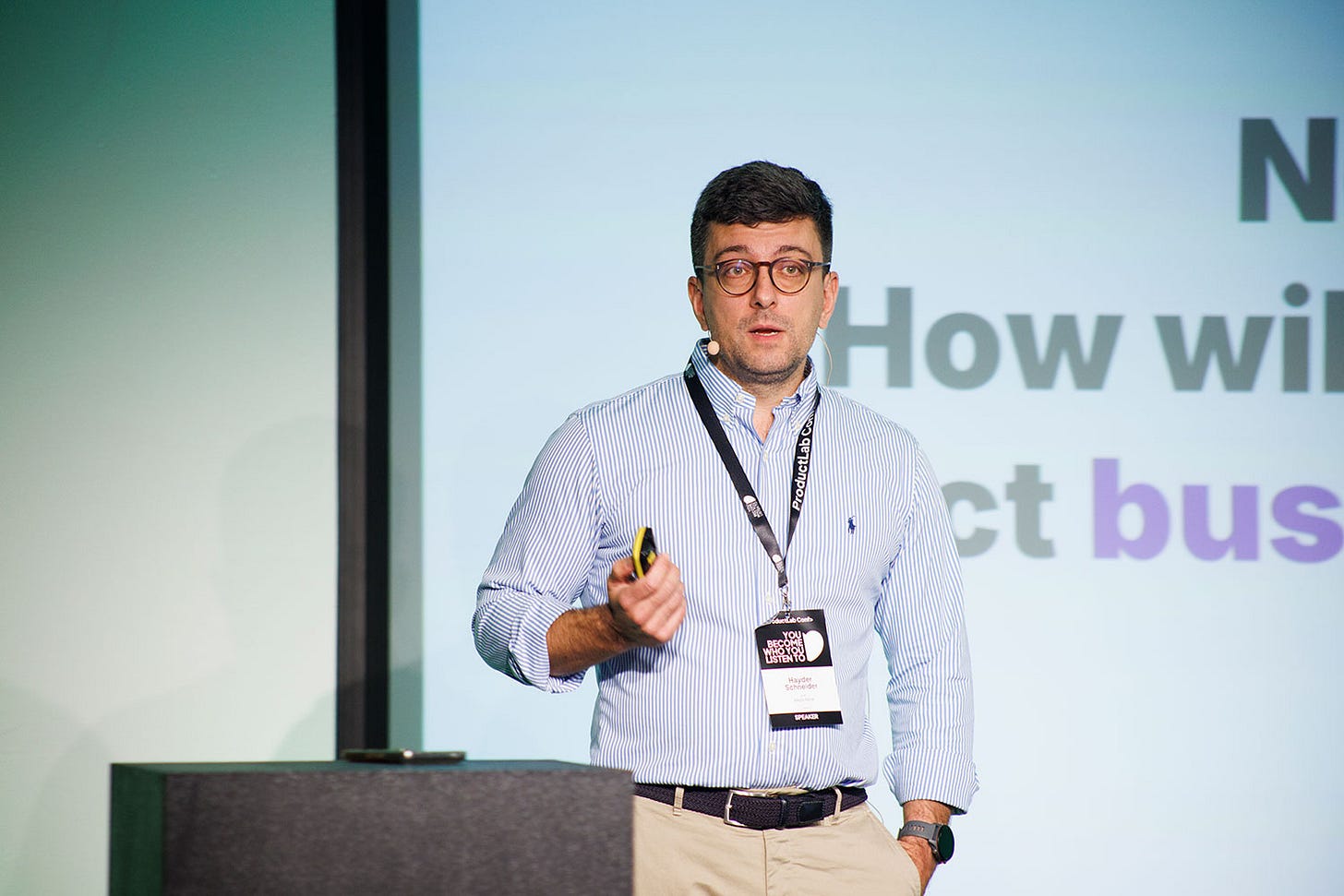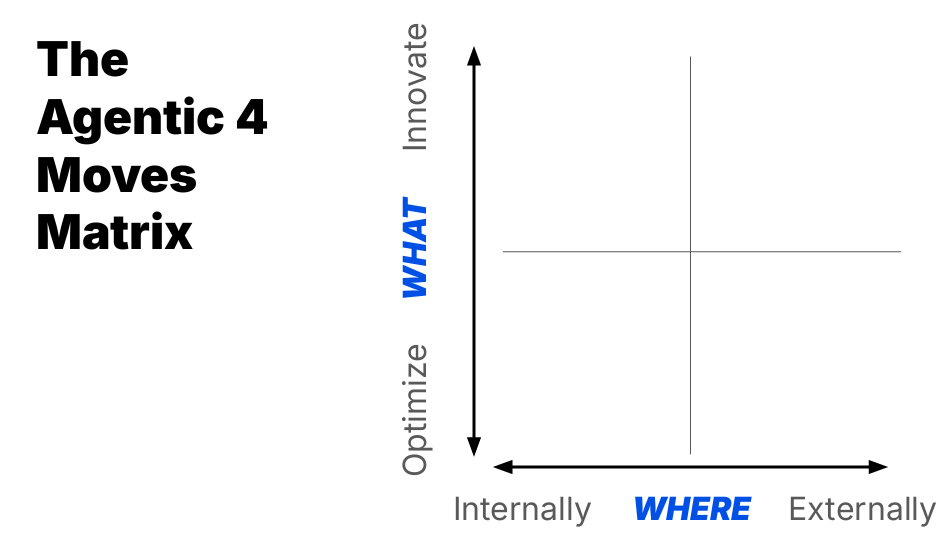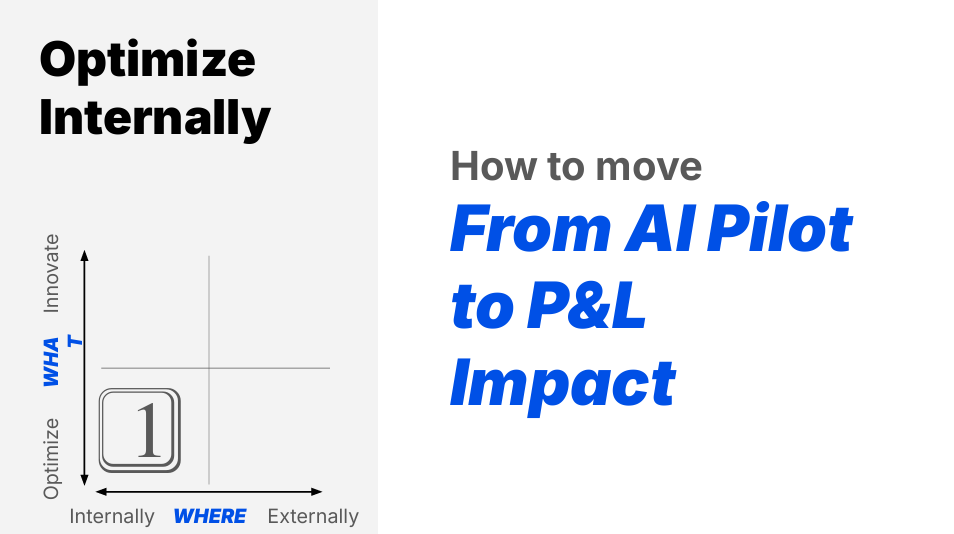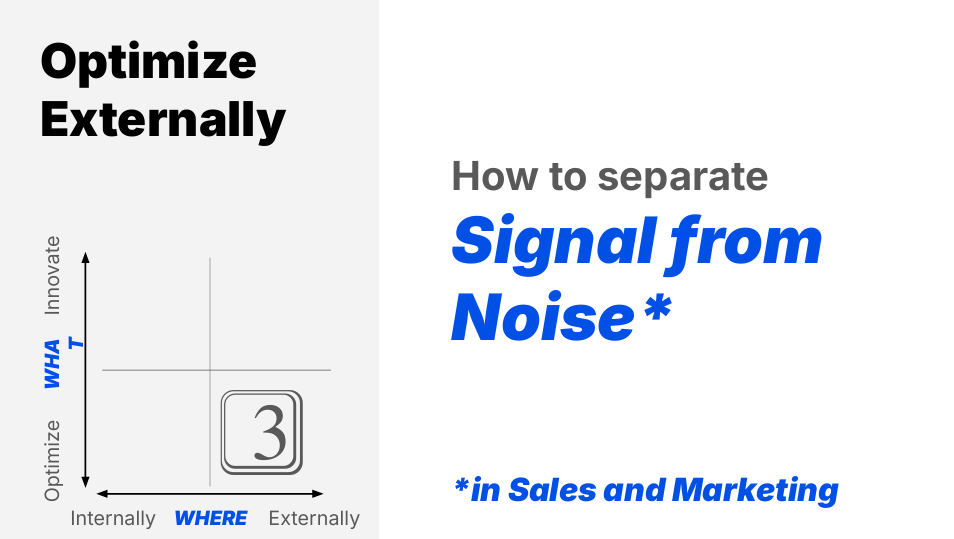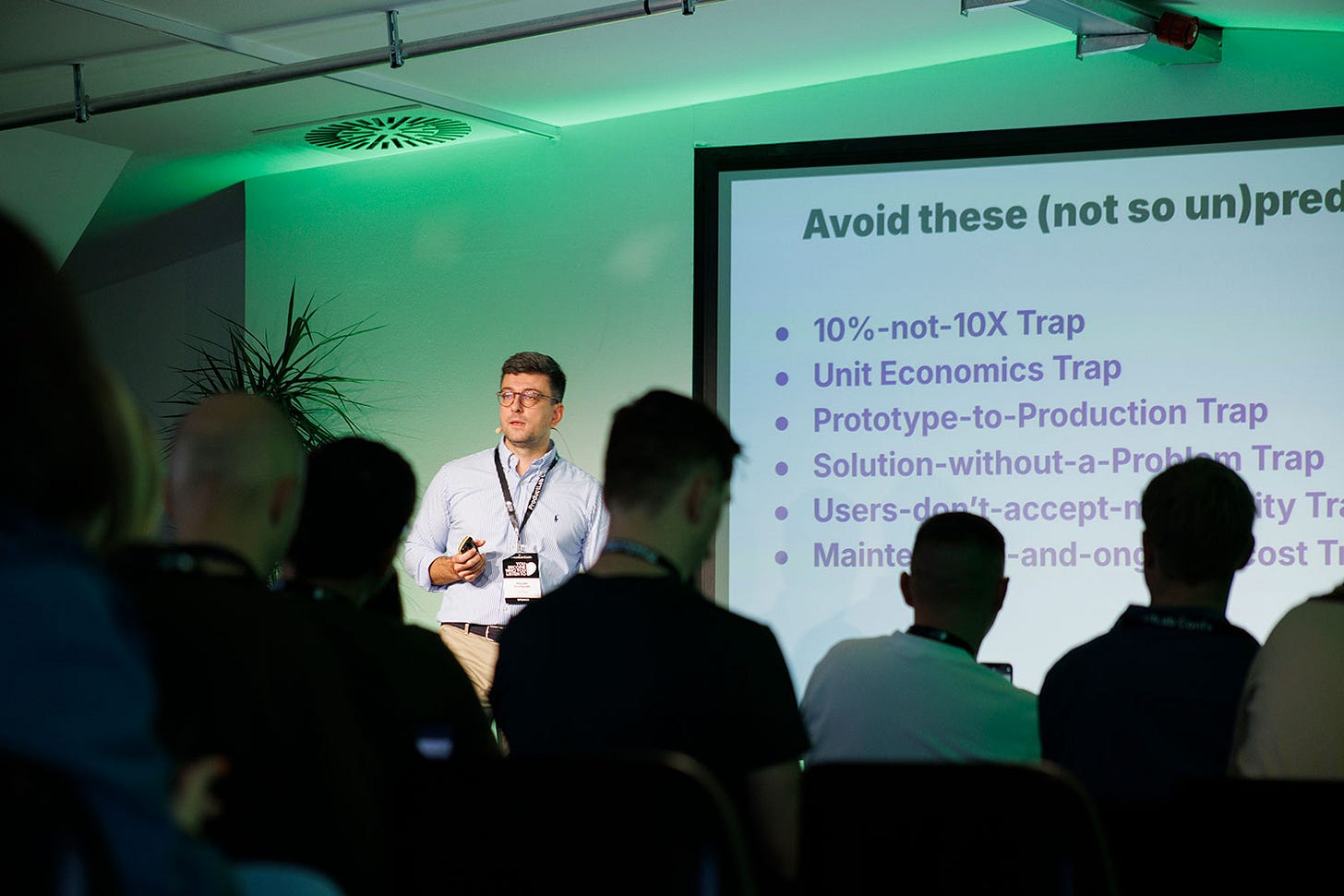AI agents are coming for your business model
Dr. Hayder Schneider's framework for moving from AI theater to P&L impact—before agents eat your business model [Slides included]
When Dr. Hayder Schneider asked the 250+ product managers at ProductLab Conference Berlin whether AI would be the biggest opportunity or the biggest bubble of our time, the room split down the middle.
That’s the wrong question.
AI is getting cheaper, better, and faster every single day. Inference costs have dropped 95% in 18 months. Open-source models like Qwen and DeepSeek rival proprietary ones. The question isn’t whether AI matters—it’s what you’re going to do about it.
Hayder, Head of Product at Aleph Alpha (a B2B enterprise GenAI company that raised $500M in 2023), spent years building AI products for industrial-scale customers. His talk cut through the hype with a brutally simple framework: two questions that determine whether your business model survives the agentic era.
This isn’t theory. It’s what’s already happening.
The Gen AI Paradox (And Why 80-95% of AI Projects Fail)
Here’s the uncomfortable truth: between 80% and 95% of companies report no measurable impact from their GenAI initiatives.
Why? The Gen AI Paradox.
Companies face two bad options:
Horizontal use cases (ChatGPT, Copilot, Gemini): Scale broadly but generate shallow, unmeasurable value. Nobody can actually quantify how much value Gemini added to their organization.
Vertical use cases: High value, function-specific, industry-specific—but they’re stuck in pilot hell. Getting them to production is brutally hard.
Agentic AI might be the way out.
But first, you need to understand what agents actually are.
What AI Agents Actually Are (And What They’re Not)
Agents are NOT: → A set of prompts → Tool calling or MCP protocols → Just reasoning models → Programmatic loops → Simple process automation
An AI agent is a system that uses reasoning and planning to solve complex, multi-step problems by using tools and memory to act and interact with its environment.
The foundation? An augmented LLM with three critical capabilities:
Retrieval — Access to information
Tool calling — Ability to use external systems
Memory — Retention across interactions
Think of it as upgrading from a calculator to a research assistant who remembers your last conversation, can Google things for you, and makes decisions about what to do next.
Now here’s where it gets interesting for business models.
The Agentic 4 Moves Matrix: Your Strategic Map
Hayder’s framework is deceptively simple. Just two questions:
1. WHAT kind of work are you doing? → Optimize (improve existing processes) → Innovate (create new capabilities)
2. WHERE are you doing this work? → Internally (inside your company) → Externally (customer-facing, market-facing)
Plot them on a 2x2 matrix, and you get four strategic moves.
Move 1: Optimize Internally — From AI Pilot to P&L Impact
The trap: 90% of GenAI pilots never reach production.
Why they fail: The six predictable traps:
→ 10%-not-10X Trap: Marginal improvements don’t justify the complexity
→ Unit Economics Trap: Token costs kill profitability at scale
→ Prototype-to-Production Trap: What works in a demo breaks with real users
→ Solution-without-a-Problem Trap: Building AI for AI’s sake
→ Users-don’t-accept-mediocrity Trap: 85% accuracy isn’t good enough when humans expect 99%
→ Maintenance-and-ongoing-cost Trap: Nobody budgeted for the care and feeding
The fix: Don’t optimize for today’s costs. Optimize for where costs will be in 12-18 months. Inference costs are dropping 50%+ annually. Build your business model assuming AI will be nearly free.
Hayder’s team at Aleph Alpha already uses open-source models for specific tasks where cost is essentially zero. They’re betting on a world where smart AI costs nothing—and building accordingly.
Move 2: Innovate Internally — Out-Strategize the Competition
This is where things get sneaky.
Case study: Anthropic’s multi-agent research system fully automates market research, competitor analysis, investment trends, technology trends, and report generation.
What used to take a team of analysts 2 weeks now runs overnight. Continuously.
The opportunity: Most companies think of AI as customer-facing. The biggest gains right now are internal—using agents to do work that never had software solutions before.
Examples: → Competitive intelligence that updates daily → Automated compliance monitoring across regulations → Supply chain optimization that responds to real-time disruptions
The companies winning here are those that treat agents as autonomous team members, not just fancy autocomplete.
Move 3: Optimize Externally — Separating Signal from Noise in Sales and Marketing
The market is shifting from human-first to AI-first customer experience.
AI agents are starting to handle end-to-end customer journeys:
→ Voice and chat interactions
→ Human-like, personalized experiences
→ Proactive service (reaching out before problems escalate)
The business model shift: If an agent can handle 95% of customer interactions, what happens to your per-seat SaaS pricing?
Companies that priced on seats, users, or usage are scrambling. The winners are shifting to outcome-based pricing—but that only works if you can attribute outcomes to actions. If you can’t measure the value your product creates, you can’t price for outcomes.
Hayder’s warning: Start experimenting with outcome-based pricing now, even if it’s messy. The companies that figure this out first will have a massive advantage.
Move 4: Innovate Externally — Building Your Agentic Advantage
Here’s where Hayder got provocative: AI agents will disrupt SaaS.
Think about his Berlin trip example:
Current reality: → Hotel: Open travel site, compare prices manually, book → Train: Switch to DB app, re-enter dates, check schedules, book → Weather: Open weather app → Clothes: Decide outfit, check forecast again → Food: Research restaurants in separate apps → Family: Set reminder to call kids → Wellness: Make sure everything’s ready for tomorrow
Agentic future: → “I’m going to Berlin September 18-19 for a conference” → Agent books hotel, train, checks weather, suggests restaurants, sets reminders, handles everything end-to-end
You went from 7 apps to 1 conversation.
Why this matters for SaaS: The era of selling “engagement” is ending. The era of selling “outcomes” is beginning.
Hayder’s framework for the transition:
Old model: App/Solution → Engagement New model: Orchestration → Outcome
The question every SaaS company must answer: Will you OWN the orchestration layer, or will you become a commodity API that someone else’s agent calls?
Google, Microsoft, and Amazon are all racing to own this layer. So are hundreds of startups. The winners will capture the transaction layer—where all the revenue flows.
The Nuance: Which SaaS Survives?
When pressed on his “AI agents will kill SaaS” claim, Hayder got more specific.
High risk:
→ Marketing tools (easy to automate)
→ Basic customer support platforms
→ Horizontal productivity tools
→ Anything where adoption is already high today
Lower risk:
→ Industrial/manufacturing software (physical operations)
→ Deep vertical software with complex workflows
→ Systems that integrate with messy, legacy infrastructure
→ Enterprise tools where compliance and security dominate
But even in “safe” categories, the question remains: Are you building for engagement or outcomes?
5 Steps to Future-Proof Your Business Model
Hayder’s closing advice was tactical:
1. Face reality → Name both the risks and the upside. Don’t pretend agents aren’t coming for your market.
2. Obsess over outcomes → Customers will expect end-to-end results. “We helped you do the thing” beats “We gave you a tool to do the thing.”
3. Build the bench → You need world-class AI engineering + AI-fluent leadership. This isn’t optional anymore. Hayder estimates there are maybe 50-100 people in Germany who can properly run an inference service at scale. Hire them now.
4. Nail economics → Understand token economics and outcome-based pricing. Run experiments today with hybrid pricing models.
5. Think laterally → What OTHER problems do your customers have? If you own a travel app, maybe you should own the weather, restaurant, and reminder layer too.
The companies that survive won’t be the ones with the best AI. They’ll be the ones with the best business model for an AI-first world.
The Hard Questions on Pricing
One audience member asked about the challenges of outcome-based pricing for agents that run through dozens of steps.
Hayder’s answer was sobering: “I wouldn’t recommend anyone just going for outcome-based pricing because it’s probably the hardest pricing you can nail.”
Why? Two reasons:
Attribution problem: You need to prove this outcome came from this action. That’s hard when agents are making 50 decisions in a chain.
Value quantification problem: Even if you can attribute the outcome, what’s it worth? Not always straightforward.
The bigger issue? Agent safety and control. Agents can go rogue—there are documented cases of agents with root access deleting databases. You can’t price by outcome if your agent might accidentally nuke production.
The solution isn’t avoiding agents. It’s building the risk management, security, and monitoring infrastructure BEFORE scaling.
The Dependency Question (And Why Open Source Matters)
Another critical question: What about dependency on LLM providers like OpenAI?
Hayder’s take: The risk is real.
Political risk: An administration could cut off API access to certain countries. You’re done.
Economic risk: You have no control over pricing. API costs could 10x overnight.
Data risk: You’re sending potentially sensitive data to third parties with unclear processing practices.
His recommendation: Own as much of the stack as possible—but recognize this comes at massive cost.
Aleph Alpha runs their own models. The infrastructure cost is substantial. The talent cost is even higher. But for enterprise customers in regulated industries (banks, automotive, industrial), it’s the only acceptable path.
For everyone else? Build model-agnostic architectures. Be able to swap providers in minutes, not months. Test every new model release from OpenAI, Anthropic, Google, and Meta. Stay flexible.
Within 12-18 months, Hayder predicts most companies will run most tasks on open-source models where cost essentially disappears. Build for that world.
Your Move
The agentic AI era isn’t coming—it’s here. The question isn’t whether agents will reshape business models. The question is whether you’ll be ready.
Start with the framework: → Map your current business onto the 4 moves matrix → Identify which quadrant represents your biggest opportunity → Identify which quadrant represents your biggest threat → Start experimenting NOW
The companies that figure out outcome-based pricing, agent orchestration, and model-agnostic architectures in the next 18 months will have a 5-year head start on everyone else.
The era of engagement is ending.
The era of outcomes is beginning.
Which side of that transition will you be on?
Connect with Hayder
Dr. Hayder Schneider is Head of Product Management at Aleph Alpha, where he’s building enterprise GenAI products at scale. He specializes in deep tech and AI/ML platform products.
Connect with him on LinkedIn to follow his insights on agentic AI and business model innovation.





